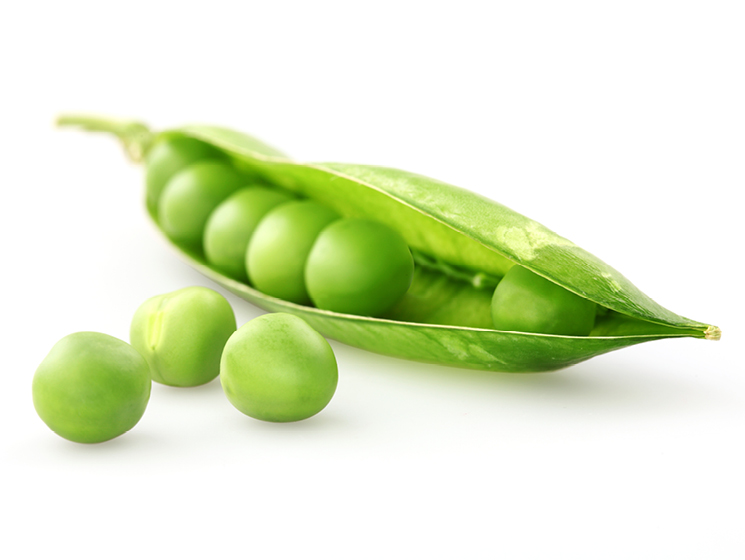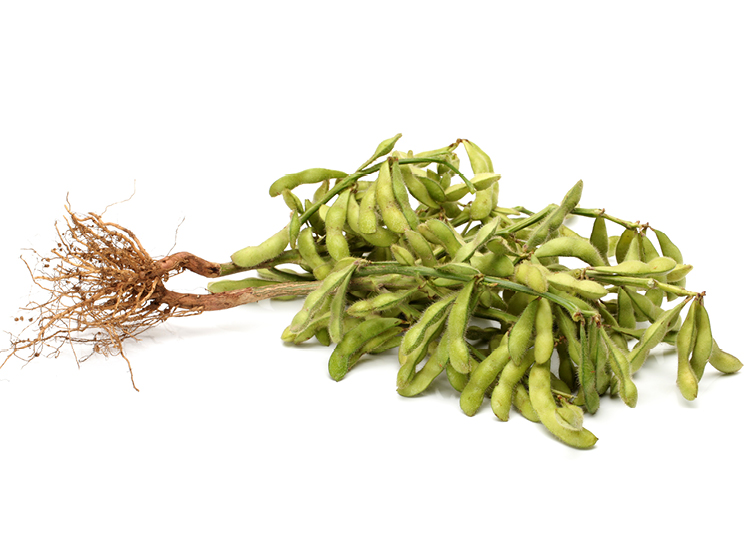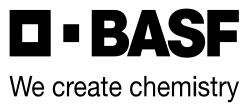Basagran Forté
Group 6
Basagran® Forté herbicide gives you superior post-emergent control of some of the toughest broadleaf weeds around.
Provides post-emergent control of some of the most problematic broadleaf weeds in your fields, including:
- Ragweed
- Lamb's-quarters
- Velvetleaf
- Canada thistle
- Yellow nutsedge
Labels & SDS
3 AVAILABLE
Applicable On

Field Peas

Soybeans
Labels & SDS
Benefits of Basagran Forté
- Basagran Forté is a Group 6 herbicide that works by contact action.
- Thorough coverage of the leaves is important for consistent weed control because uptake into the plant occurs primarily through foliage.
Product Info & Application Guide
Weed Management
Bird rape*
Buttercup
Chickweed (common)
Cleavers
Cocklebur
Corn spurry
Flower-of-an-hour
Galinsoga (hairy)
Groundsel (common)*
Jimsonweed
lady's-thumb (smartweed)
Lamb's-quarters*
Low cudweed
Mustard (wild)
Nightshade (hairy)
Purslane
Radish (wild)
Ragweed (common)*
Ragweed (giant)
Redroot pigweed* (suppression only)
Shepherd's-purse
Stinkweed
Thistle (Russian)(suppression only)
Velvetleaf**
*Triazine resistant strains of these weeds are controlled by Basagran Forté.
**Basagran Forté will defoliate velvetleaf 4 leaf or larger, but re-growth may occur.
Application Tips
Ground Application
- Use sprayers equipped with standard flat fan pesticide nozzles with the recommended spray volume, pressure and additives.
- Tilt spray nozzles 45 degrees forward to ensure better coverage.
Spray Volume
- Minimum 40 L/ac (100 L/ha). Use larger water volumes (up to 120 L/ac) for weeds at the upper limit of their recommended stage for treatment.
Spray Pressure
- Minimum 275 kPa. Use higher pressure (use up to 425 kPa) for weeds at the upper limit of their recommended stage for treatment.
Note
- Use a minimum of 80 L/ac if crop canopy or heavy weed population interferes with thorough spray coverage, or under cool temperature.
When to Apply
- Although the time of application should primarily relate to the stage of weed growth, the crop must also be in a tolerant stage as shown below.
- The information on usual crop stage for optimum weed control may also serve as a guide to spray timing.
Crop Application Timing
Crop |
Tolerance Stage |
Usual stage of crop for optimum weed control |
|---|---|---|
Beans (dry) including white beans and kidney beans |
Tolerant after 1st trifoliate leaf has fully expanded. |
1 - 3 trifoliate leaves |
Corn (grain, silage, sweet and seed) |
Tolerant at any growth stage |
1 - 5 leaf stage |
Faba beans |
Tolerant after 2 or 3 leaf stage or crop is 10 cm high |
Soon after 3 leaf stage |
Flax (excluding low linolenic acid varieties) |
Tolerant when crop is 5 cm or higher |
Soon after crop reaches 5 cm |
Peas (field and processing) |
Tolerant after 3 nodes are present |
Soon after 3 pairs of leaves form |
Soybeans |
Tolerant at any growth stage |
Unifoliate to two expanded trifoliate leaves usually 18 - 28 days after planting |
Weed Application Timing at 0.9 L/ac
Weed species controlled |
Maximum leaf stage |
|---|---|
Bird rape*
|
6-leaf |
Buttercup |
6-leaf |
Chickweed (common) |
1 - 3 weeks after emergence |
Cleavers |
1 - 3 whorls |
Cocklebur |
10-leaf |
Corn spurry |
10 cm |
Flower-of-an-hour |
10-leaf |
Galinsoga (hairy) |
6-leaf |
Groundsel (common)* |
10 cm |
Jimsonweed |
10-leaf |
Lady's-thumb (smartweed) |
10-leaf |
Lamb's-quarters* |
8-leaf |
Low cudweed |
6-leaf |
Mustard (wild) |
10-leaf |
Nightshade (hairy) |
6-leaf |
Purslane |
6-leaf |
Radish (wild) |
6-leaf |
Ragweed (common)* |
6-leaf |
Ragweed (giant) |
4-leaf |
Redroot pigweed* (suppression only) |
4-leaf |
Shepherd's-purse |
6-leaf |
Stinkweed |
6-leaf |
Thistle (Russian)(suppression only) |
4-leaf |
Velvetleaf** |
6-leaf |
*Triazine resistant strains of these weeds are controlled by Basagran Forté.
**Basagran Forté will defoliate velvetleaf 4 leaf or larger, but regrowth may occur.
Weed Application Timing at 0.7 L/ac
Weed species controlled |
Maximum leaf stage |
|---|---|
Bird rape* |
6-leaf |
Cocklebur |
6-leaf |
Flower-of-an-hour |
6-leaf |
Lady's-thumb (smartweed) |
6-leaf |
Mustard (wild) |
6-leaf |
Shepherd's-purse |
6-leaf |
Stinkweed |
6-leaf |
Velvetleaf** |
4-leaf |
+Bindweed (field)*** (suppression only) |
6 cm |
+Thistle (Canada) |
20 cm |
+Yellow nutsedge |
20 cm |
*Triazine resistant strains of these weeds are controlled by Basagran Forté.
**Basagran Forté will defoliate velvetleaf 4 leaf or larger, but regrowth may occur.
***Treat field bindweed before it is dark green and has begun to trail.
+For perennial weeds, repeat application 7 - 15 days after first treatment (if necessary).
How Much to Apply
Basagran Forté is available in cases of two 10-litre jugs or bulk, depending on individual requirements.
Rates
To improve control of velvetleaf or lamb's-quarters, add 2.5 L/ac (6 L/ha) ammonium sulphate or 4 L/ac (10 L/ha) 28% urea ammonium nitrate (UAN) to either the 0.9 L/ac or the 0.7 L/ac rate of Basagran Forté.
Add Basagran Forté 0.5 - 0.7 L/ac + Pursuit® 125 ml + Nitrogen Source 0.8 L/ac.
Add 0.5 L/ac Blazer to 0.5 L/ac rate of Basagran Forté.
Add Basagran Forté 0.9 L/ac + Pinnacle 2.2 - 3.2 g/ac herbicides.
Add Basagran Forté 0.7 L/ac + Pinnacle 2.2 - 3.2 g/ac herbicides.
Mixing Instructions
- Fill the tank half full with clean water. Start agitation or by-pass system.
- When required, add correct amount of nitrogen source. Do not add nitrogen source when tank-mixing Basagran Forté with Pinnacle.
- If required, add the correct amount of Pinnacle or Pursuit. For use on soybeans only. Continuous agitation is required to keep Pinnacle or Pursuit in suspension. When using the Basagran Forté + Pinnacle tank-mix, prepare a Pinnacle water slurry in a separate container with clean water before adding to spray tank on repeat tank loads.
- Add correct amount of Basagran Forté and agitate 2 to 3 minutes.
- Add remainder of water, agitate and spray.
- If an oil film starts to build up in the tank, drain and clean tank with a strong detergent solution.
- Thoroughly clean the spray tank immediately after use. Refer to specific tank mix partner label for clean-up instructions.


